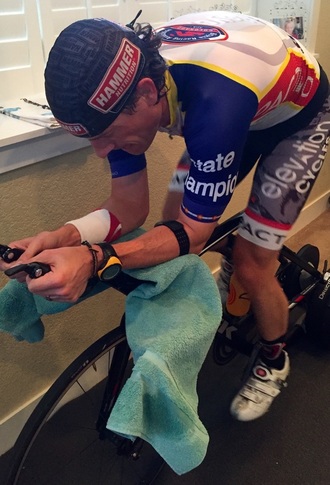Indoor cycling more and more means the difference between 1st and 2nd in a whole host of races – on the velodrome, in time trials, in stage races, in triathlons of varying distances. You name it.
An increasing number of triathletes are choosing to do most of their bike training indoors year-round -- not just in the heart of winter, or during the April showers but year round. It is now not uncommon for top cyclists to do the vast majority of their riding indoors, as a growing bulk of evidence demonstrates that their stationary suffer-fests are more effective than riding outdoors.
When those speaking to the benefits of indoor cycling include a Who’s Who of world champions – Andy Potts, Tyler Stewart, Mirinda Carfrae, Leanda Cave and Caitlin Snow, just to name a few – doing more of your cycling indoors is probably worth a listen. In fact, 2010 Ironman Canada winner Meredith Kessler rides outside just once every two weeks on average.
One reason regular indoor cycling is advantageous is because objective measurements are crucial for knowing if you are getting fitter or faster. Just about every variable is controlled, so you can easily see whether or not you are improving in black-n-white that you are improving. A classic example of the meticulous attention to detail provided by indoor cycling is Chris Boardman as he prepared to set the vaunted Hour Record – which still stands today. Another benefit is that because you are constantly pedaling, riding indoors is a more efficient and practical use of time. Just about anyone can ride an hour indoors, and a lot of benefit can be had in an hour for sure. But, if you can occasionally extend your indoor rides to 2-3 hours, then you’re also building some mental and physical toughness that’s hard to replicate in the same amount of time outdoors.
But why are indoor rides so effective? It’s not just about “spinning away the time.” The fact is those who effectively leverage indoor sessions take themselves through – or are taken through -- extremely intense and extremely focused workouts, which are highly structured to meet their training goals. I think this change in mindset is critical to getting the most out of riding indoors.
Meaning, riding inside is not just a substitute for riding outside when the weather is icky. Instead, we need to realize that indoor riding carries with it a ton of potential benefit if used as the tool it is. Just like using a track for running intervals or measured repeats in the pool for swimming. And, for Masters triathletes and Masters cyclists, riding indoors can be a big boon to their fitness and can really help these athletes fight mightily against Father Time.
Make no mistake, riding outside is very stimulating especially if you live in a beautiful part of the country like I do here in Boulder, CO. There is little more I like than to climb up any number of gorgeous canyons. But, what goes up, must come down and some of the descents can last as much as 30-45 minutes. Even if I can pedal for most of the descent, my HR and power tend to drop. While practicing descending holds merit, from a fitness perspective this is wasted time.
Whether it is sprints, VO2max intervals or LT-specific intervals, riding indoors helps you better understand precisely the progress you’re making. Get a fan blowing on you, get your music pumping, and have plenty of carbo drink at your side, then give it a shot.
By leveraging the indoor trainer as another tool in your box, and by pulling it out more often than you probably do today, you can put yourself in a position to make even greater gains on the bike – not just in the winter, but year round.
Happy Training,
Coach Nate


 RSS Feed
RSS Feed